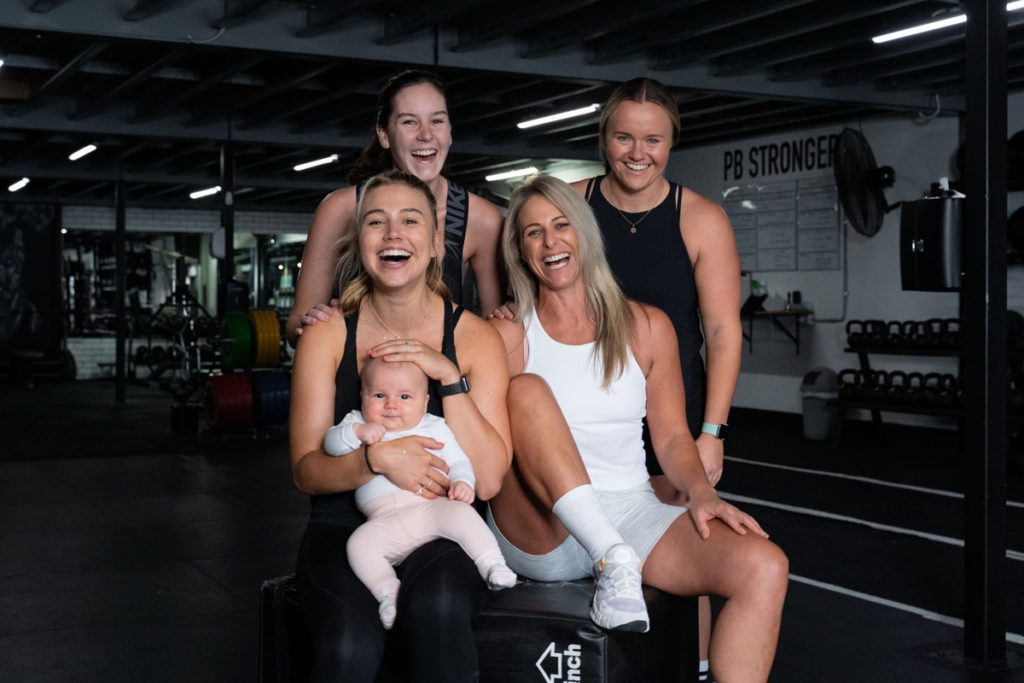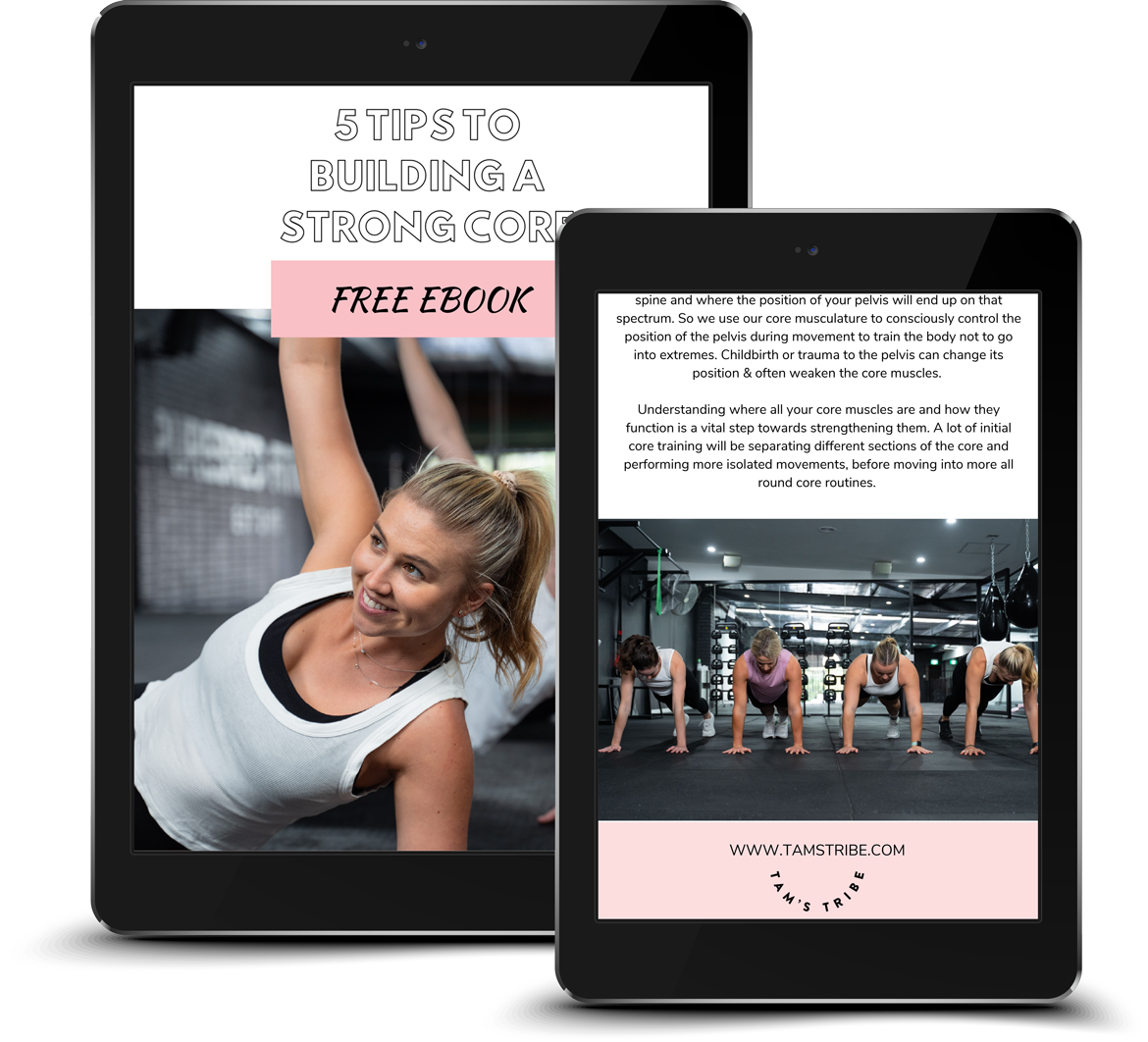I am sure you’ve seen a health professional or coach who has told you to “improve your posture” or “sit up straight”. Well if only it was that simple right? I won’t lie as a younger coach I have definitely said these things and practised them myself without the true understanding of all the necessary components we need to think of when it comes to improving our posture. That is why I sat down for this awesome chat with my physiotherapist Ciaran Fox and we chatted about all things posture, the rib cage, breathing and the pelvis. I have learned so much from this wonderful lady so I hope you enjoy some of her wisdom here too.
Can you introduce yourself to our readers and let them know what you do?
Hi, I’m Ciaran Fox and I’m a physiotherapist and the owner of Fit and Flow Physiotherapy Caringbah. I treat people of all ages and ability levels and I love assessing and finding the reason behind a person’s pain or limitation. This means assessing the person as a whole, looking at areas above and below the area of pain to see what is causing them to remain in the same pattern of pain or limitation. It also means assessing and managing the patient based on where they are right now and where they want to get to, working towards that goal or activity. Because of this, I see a range of patients from athletes with acute sporting injuries, to pregnant and postpartum women who are looking to return to exercise and to those with a complex, multi-area and/or long standing injury that they have seen other clinicians for and can’t seem to make headway. I also have a special interest in treating people with rib and thoracic spine (mid-back) issues and pelvic pain and issues.
How long have you worked as a physiotherapist? What led you to working in the industry and what is your favourite thing about what you do?
I have worked as a physio for 12 years and knew from about the age of 13 that I wanted to be a physio. I was a really sporty kid growing up and spent a lot of time at the physio for my own sports injuries or for those of my older siblings. To me it looked like the perfect job, helping people with injuries that were stopping them from doing sport.
I have a lot of favourite things about being a physio, I love working with people, I love problem solving and investigating until I can uncover the reasons behind their problem or injury, I love helping people improve how their body moves and functions so that they can get back to doing what they love, I also love working with new and different patients and learning about their lives and work outside of their injury.
Can you explain to us what good posture means?
I think when we hear the term “good posture” we automatically think of being nagged as a teenager to sit up straight or about those deportment classes where “proper young women” walked around with a book on their head. So often, I see people working really hard to pull their body into what they have been told is “good posture”, with their chest up and shoulders back and down. However, this often isn’t achievable or isn’t the best position for that person and is contributing to their issue or injury.
In an anatomical sense, we want to see the body stacked over the feet in standing; feet with weight in the heel/little toe and big toe, knees unlocked, pelvis neutral (i.e. not tipped forward or tucked under), thorax (ribcage)over the pelvis and not flared or compressed, then head stacked over the thorax, and stacked over the pelvis and evenly on sit bones when sitting.
In saying that, if you have areas of stiffness or muscles that are too tight or weak, getting into what would be considered “good posture” might not be possible (just yet) and attempting to force your body there can create more pain or issues. We have to work with your body and where it currently is to find your “best posture” or best position, rather than creating so much extra tension trying to pull yourself into what we consider “good posture” to be
What are some main postural issues you treat women for in your clinic?
Rib and midback pain or stiffness
Neck pain and headaches
Shoulder pain and restriction
Pelvic pain
Lower limb pain, including hip, knee and foot/ankle pain
Can you let us know the importance of the rib cage and how significant a role it plays in our posture?
So the rib cage or thoracic cage is made up of 12 ribs all stacked on top of each other. Your ribs meet your breastbone (sternum) at the front and your thoracic spine vertebrae in your back. The rib cage is designed to protect vital organs like your heart and lungs, it also plays a role in breathing and it supports the upper limbs (your shoulder blades and arms) as well as the neck and head. We used to consider the rib cage to be a fixed or rigid structure, however with 48 joints and more than 20 muscles that attach to the rib-cage, there is a lot of movement available for ribs and their associated thoracic spine joints.
The rib cage has strong muscular connections to the pelvis below and the upper limbs and neck above. So anything happening in the rib cage has the ability to affect the function and position of the lower body via the pelvis and the upper body.
The rib cage also plays an important role in our true deep core activation, and our ability to recruit our core plays in to how we maintain good postures or positions. The diaphragm (our biggest breathing muscle) attaches to the base of the rib cage and our deep core muscles attach to the rib cage and then to the pelvis, any restrictions or change in position of the ribcage can affect our ability to recruit our deep core during different tasks .
How close (and important) is the relationship between the ribs, pelvis and pelvic floor?
As we touched on above, the ribcage is connected to the pelvis via our deep core muscle (transversus abdominis) as well as via our back muscles and all our other abdominal muscle layers. With these muscle connecting at the rib cage at one end and to the pelvis at the other end, we can have muscle tightness affecting the rib cage and/or the pelvis and we can have joint restriction at the rib cage causing muscle spasm or muscle overactivity and thereby creating a different pull on the pelvis (or vice versa).
At the base of our rib-cage is the diaphragm (our big breathing muscle) and at the base of our pelvis is the pelvic floor which is almost like another diaphragm or hammock of muscles that give support to the pelvis/lower back, as well as assisting in continence and sexual function. So if we imagine our trunk is like a barrel, the diaphragm is the top of the barrel, the pelvic floor is the base of the barrel and then our deepest abdominal muscle (transversus abdominis) and deep back muscles (multifidus) acts like the sides of the barrel.
But the exciting part of this connection has more to do with the pressure changes that happen as we breathe! So as we take a breath in, the diaphragm moves downwards (opening out like an upside down umbrella in our ribcage), this in turn pushes more pressure into our abdominal cavity and causes the pelvic floor to move downwards (like during relaxation), then as we breathe out our diaphragm rises which causes the pelvic floor to be drawn upwards (like during activation of these muscles).
So, I like to say to patients that being able to take a good diaphragmatic breath gives you free pelvic floor activation!
With alot of our patients it often becomes necessary to relearn how to breathe to engage the diaphragm and if they can’t do this, often we may need to treat some of the joints of surrounding muscles of the rib-cage to assist.
What role do the feet play in our posture?
When standing, our feet are our base of support. They become the base that the rest of our body stacks upon. In an ideal world, our weight would be evenly distributed between both our feet and we would spread our weight between our heel (70% of our weight), big toe (20%) and little toe (10%). Often, this is hard for people to achieve due to long-term postural habits of having their weight all in their toes or all in their heels or shifted more into the left foot etc.
Do you think many women’s current lifestyle habits contribute to our postural issues and injuries? If so, which lifestyle habits do you think contribute most?
I guess it’s not just women but all people who may have lifestyle habits that contribute to postural issues or injuries. Workstation set-up is a big one (particularly with more people working remotely since COVID) and the number of hours we are sitting or sedentary for our work. Tied in with work is also the effect that stress can have on alot of people’s posture, for alot of people stress creates muscle tension in particular areas like their neck or rib-cage! Crossing your legs, shifting your weight into one hip when standing, carrying children on one hip and countless other habits affect people’s posture or injuries. Often during our physio sessions, we need to uncover the habit or posture that is contributing the most to a patient’s injury or pain and work on strategies to change this habit!
What are some helpful tips for improving posture?
I guess my big takeaways are the following:
- Ideal posture might not be possible for your body and where it is at right now.
- Working with your physio you might be able to identify mobility or strength deficits that you can work on to improve your posture/position
- Move your body, sedentary habits contribute to our postural issues. You will need a combination of mobility (stretching and movements) and strength to make it easier to assume a better posture, so have a combination of these in your week
- Think about your feet and where your weight is when you are in standing and think about your sit bones and where your weight is when you are sitting
- Sitting is unavoidable in most people’s work week, so be mindful of having that ergonomic assessment and investing in your workstation set-up at home to avoid some postural issues and injuries!
- Your pelvic floor, deep core muscles and your breathing are strongly connected. Consider your breathing and your rib-cage/thoracic cage and it’s mobility if you are having issues with your pelvic floor!
- Also consider your thoracic cage/rib cage if you have pain elsewhere, like your neck, shoulder, pelvis or lower body, in your body that is just not shifting or improving!
Want to start getting strong and improving your posture? Book your free strategy call with me today.

